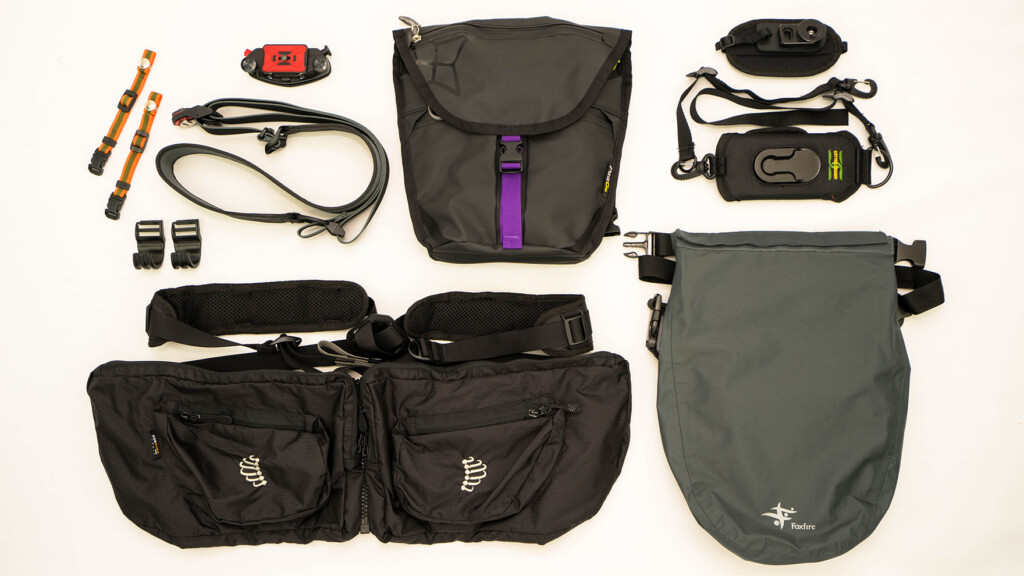
A summary of how to carry a SLR camera that is perfect for mountain climbing and traveling [Recommended by scene]
table of contents
- Recommended carrying gear for each scene
- Recommended for day hiking with little luggage: Holder type
- Recommended for all-around climbing, not only for heavy loads and long-term use: Front pack type
- Not only is it usability, but it is also recommended for those who cannot afford to compromise on safety: Chest bag-shaped
- The effect is reasonable, but cost-effective: Chest strap type
- Not suitable for mountains but perfect for travel: fast-paced strap type
- summary
Recommended carrying gear for each scene
Recommended for day hiking with little luggage: Holder type
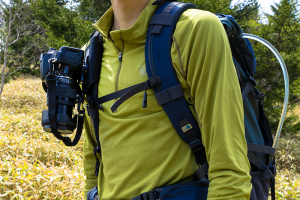 This type allows you to attach attachments to both the camera and the backpack (shoulder harness), and hook the camera into place like a holster that holds the handgun.
This type allows you to attach attachments to both the camera and the backpack (shoulder harness), and hook the camera into place like a holster that holds the handgun.
The two types we tried this time differ from Peak Design ) and rotary type ( COTTON CARRIER Even COTTON CARRIERs who have slight wobbling
Above all, the fast-paced photographing ability allows you to quickly get into the shooting position the moment you feel this is the best. Despite being a SLR camera, the usability of the camera is as good or even better than a compact digital camera or smartphone has dramatically changed the shooting style I've had up until now.
It's also smart when you put on and take off your backpack. Plus, Peak Design a wide range of optional products that can be attached to this attachment , and it's also excellent expandability considering the overall camera life (but there's no possibility that you'll have to purchase separate options to suit your environment).
However, as you can see, the exposed camera is vulnerable to rain, dust and impact, and is not worried about long-term use. Also, after the second day of long-term mountain climbing, the shoulders of those who were wearing them inevitably developed fatigue and fatigue, and in rare cases, causing pain (though this impression also depends on the person's physical strength and the weight of the camera). The holder type was considered perfect in such a stable environment, but there were no concerns about long-term mountain hiking, which is relatively heavy.
In that sense, the holder type is the most suitable for long-term, light day hiking, not a burden, and COTTON CARRIER for simple user-friendly use Peak Design also recommended for expandability .
Recommended for all-around climbing, not only for heavy loads and long-term use: Front pack type
The front pack type 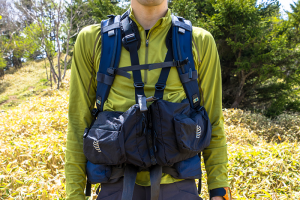 which wears a symmetrical pouch like a vest , is not designed for the camera in the first place. the RIBZ front pack (small) I tried using for a trial was also very easy to use from the perspective of carrying a camera.
which wears a symmetrical pouch like a vest , is not designed for the camera in the first place. the RIBZ front pack (small) I tried using for a trial was also very easy to use from the perspective of carrying a camera.
First of all, of course, since it's just a bag, there's no need for a detailed setup. You don't have to choose a backpack, and it can be matched with any style. Even small areas such as cushioned shoulder rests are paid attention to, and the feel of the bag on the back is also good. The straps that tighten the waist ensure that the bag fits the body at all times and does not sway significantly when walking.
The most important advantage of this pack is its good load balance. By bringing some of the items that are normally packed in your backpack in front, the balance of loads not only on the left and right sides but also on the front and back, clearly making it less likely to get tired.
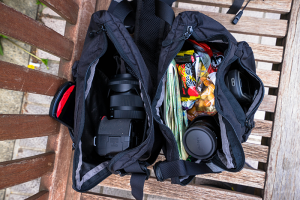 Another big advantage of this pack is the amazing storage capacity, and you can see at a glance at the photo on the right (top). The pouch on the left holds a camera (pictured by Nikon D5100) and smartphone (it may be tough for large-aperture lenses or high-spec SLRs), while the pouch on the right holds an interchangeable lens (photo is FE 55mm), and even if you put in a behavioural cask, maps, and GPS, there is still room for space. It is perfect for the need to quickly use multiple lenses and cameras.
Another big advantage of this pack is the amazing storage capacity, and you can see at a glance at the photo on the right (top). The pouch on the left holds a camera (pictured by Nikon D5100) and smartphone (it may be tough for large-aperture lenses or high-spec SLRs), while the pouch on the right holds an interchangeable lens (photo is FE 55mm), and even if you put in a behavioural cask, maps, and GPS, there is still room for space. It is perfect for the need to quickly use multiple lenses and cameras.
On the other hand, as you may have noticed, since this type is not a pack designed to carry a camera, it is important to note that it does not have the fastest shot as a holder type or the protection of a camera chest bag.
Ultimately, it depends on the effort to open and close the zipper and the degree of importance that each individual places on the safety of the shock absorbing inner cushion. Although it is not the best, it can be quickly put in and taken out, and it also has moderate protection, and has excellent load balance and storage capacity, making it a type that is definitely easy to use for heavy, long-term climbing.
Not only is it usability, but it is also recommended for those who cannot afford to compromise on safety: Chest bag-shaped
The chest bag type covers the disadvantages of the safety and comfort of 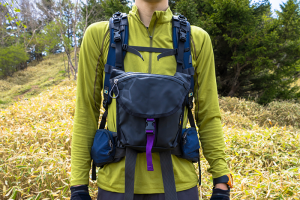 the holder type . The basic mechanism is the same as the front pack type, but this type is characterized by a camera case that is particularly weather-resistant and impact-resistant, located at the chest position, which is easy to access and does not easily shake even when walking. This type is not just for mountain climbing, but is a common camera bag, and there are a variety of models available on the market, from outdoor use to professionals.
the holder type . The basic mechanism is the same as the front pack type, but this type is characterized by a camera case that is particularly weather-resistant and impact-resistant, located at the chest position, which is easy to access and does not easily shake even when walking. This type is not just for mountain climbing, but is a common camera bag, and there are a variety of models available on the market, from outdoor use to professionals.
the PaagoWorks FOCUS (photo on the left or top) was selected as the easiest to use . Despite its high protection from the rain-resistant material and an impact-resistant removable inner case, it is lightweight and compact, and has good access to the camera, and has two front pockets with a waterproof zipper, making it easy to use, making it a very complete bag for the base. However, since it is inferior to the above two types in terms of fast photography and convenience, it is recommended when prioritizing carrying safely, regardless of the number of days or weight of the luggage .
 Overall, this is a well-made honor student, but the only thing you need to be aware of is that the backpack can be installed too low (photo on the right or above). If you attach it to the end of the shoulder harness as instructed, the pack may come around the lower abdomen, making it extremely difficult to walk in.
Overall, this is a well-made honor student, but the only thing you need to be aware of is that the backpack can be installed too low (photo on the right or above). If you attach it to the end of the shoulder harness as instructed, the pack may come around the lower abdomen, making it extremely difficult to walk in.
It is true that there is no possibility that the size of your backpack is not correct, but since backpacks are not a common structure for all manufacturers, this kind of case may not necessarily be the person.
What should I do in such cases? By preparing a separate D-ring sold as a rose, or by making an effort to attach it directly to the shoulder harness using a carabiner, you can bring it to the perfect position.
The effect is reasonable, but cost-effective: Chest strap type
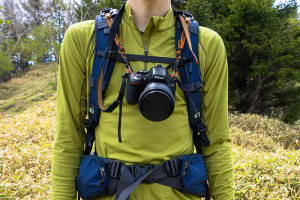 This type is affordable and cost-effective. Basically, it is used to add (complete) straps to apply load to both shoulders rather than to the neck. What I tried was the UN UNX-5802 (left or top photo) . The point is that you simply connect the shoulder harness to the camera for a short length, so you can create a similar shape by using your own carabiner, but that aside, this alone can reduce shaking to a certain extent and improve access to the camera, so you can achieve the purpose of taking photos while carrying it around, and in reality you can feel that it is more than the price .
This type is affordable and cost-effective. Basically, it is used to add (complete) straps to apply load to both shoulders rather than to the neck. What I tried was the UN UNX-5802 (left or top photo) . The point is that you simply connect the shoulder harness to the camera for a short length, so you can create a similar shape by using your own carabiner, but that aside, this alone can reduce shaking to a certain extent and improve access to the camera, so you can achieve the purpose of taking photos while carrying it around, and in reality you can feel that it is more than the price .
The downside is that it has a decent effect on everything. It's not that great that you won't notice the bra at all, and your view below is obstructed, and it's not smart to have to remove the strap every time you take a photo or take your backpack down. Recently, there are few backpacks with D rings on shoulder harnesses, and if they do not have one, you will need to make an effort to prepare a D ring that can be installed separately, just like before.
In the photos, the straps are attached directly to the camera, so they are exposed, but you can also wrap them in a camera bag before hanging them, and protection can be improved depending on how you use them.
Not suitable for mountains but perfect for travel: fast-paced strap type
the fast-shot strap type, which is well-known in the world of general camera straps . This strap is secured with a screw hole on the bottom of the camera, and allows you to quickly switch between shooting and carrying conditions.
Ninja straps may be the most popular 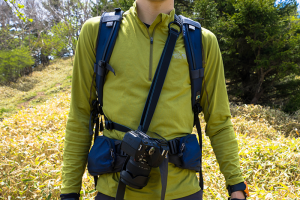 among people a Pro Sling Strap with a similar mechanism (right or top photo) . Despite splurges, this one was unfortunate, but unfortunately, it was necessary to hold the camera close from the side to the back to stably carry it, and the backpack would get in the way, making it difficult to say it's easy to use when climbing. However, this type, which is compact and easy to install, is certainly a very smart way to carry it with you for everyday use, and in fact it is still useful for light travel.
among people a Pro Sling Strap with a similar mechanism (right or top photo) . Despite splurges, this one was unfortunate, but unfortunately, it was necessary to hold the camera close from the side to the back to stably carry it, and the backpack would get in the way, making it difficult to say it's easy to use when climbing. However, this type, which is compact and easy to install, is certainly a very smart way to carry it with you for everyday use, and in fact it is still useful for light travel.
summary
I'm sure there have been many interesting reviews online about the gear I tried this time on my personal blogs. Reading them will be a great reference. However, the shooting styles vary from person to person, and of course the usage and environment vary from person to person. For me, I simply wanted to know which one is actually easier to use after trying it side by side. And I think that more objective evaluations like this one are worth sharing. In that sense, I hope that the results of this year will be of great help to you.
There is still room for improvement in gear in this genre, and many users are eagerly waiting for it all around the world, and new ideas are being born one after another at kickstarters in the US. At Outdoor Gearzine, we will continue to look forward to the latest gear.








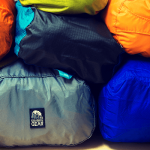 How to choose a convenient stuff sack and recommended models for different purposes
How to choose a convenient stuff sack and recommended models for different purposes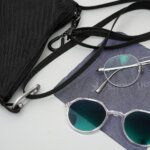 [Availability satisfaction and ease of use] I tried out the JINS x Snow Peak collaboration eyewear "JINS Switch Combination Titanium" [Quality Of Camping Life Improvement Committee #001]
[Availability satisfaction and ease of use] I tried out the JINS x Snow Peak collaboration eyewear "JINS Switch Combination Titanium" [Quality Of Camping Life Improvement Committee #001]